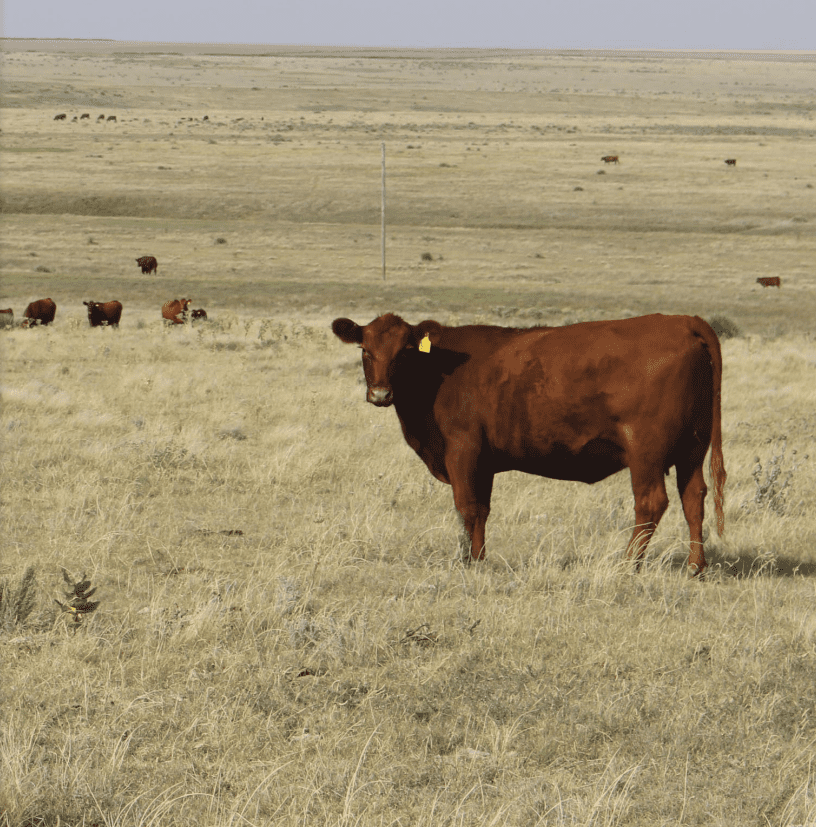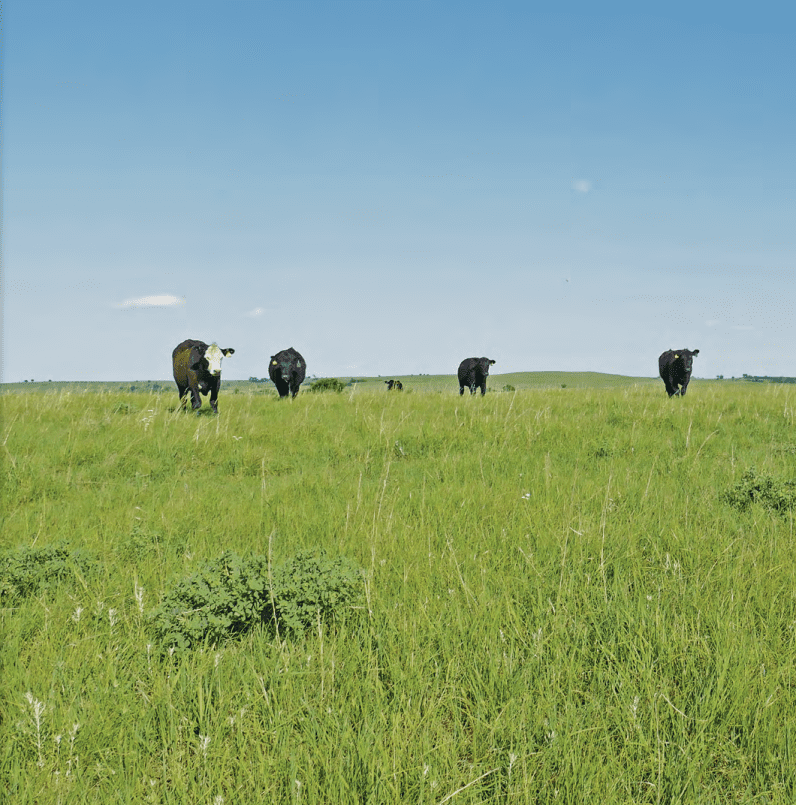

Geneticists have a way of making things complicated, using phrases like “single nucleotide polymorphism”, “estimated progeny difference”, and the scariest of all – “genomics”.
Since its introduction into the seedstock industry, genomics has been a concept as abstract as the “cloud”.
It is something that must be believed, not seen. It can’t be physically touched or placed into a pretty package.
Increasing weaning weights in calves by using bulls with high growth potential is very visible but takes time to truly appreciate.
Regardless, no matter how complex the wording or idealistic a concept, I think it is easy to understand that genomics is here to stay.

New technology takes time to implement in the beef business, first by industry innovators and early adopters, then, based on proof of concept, by the early majority.
This is about where the use of genomics has reached in the seedstock industry.
Some producers have seen so much benefit from testing their bulls they are now testing females as well.
But just as desirable genetics trickle down from the seedstock to commercial industry, the same thing is happening with the use of genomics – and we are just getting started.
I believe there are three levels of investment in genomics in the commercial industry.
The first option, if you do nothing else, is to purchase bulls with genomically enhanced EPDs (GE-EPDs) from trusted seedstock providers – they have already removed a majority of the risk from your purchase.
How frustrating is it to buy a bull only to have his numbers shift after progeny or relatives’ records appear in the evaluation?
This concept is referred to as possible change.
Purchasing bulls with GE-EPDs decreases the movement you could see in their numbers as more information enters the database.
On average, you will do a better job of choosing the bulls to bring into your herd and their daughters will better match your objectives.
This is a great starting point into the use of genomics, especially for someone trying to get their feet wet.
However, the introduction of new commercial possibilities poses the question – can you do more? The answer is yes.

If you are an all-in, data-driven producer, you may be surprised to know that through programs like the American Simmental Association’s Total Herd Enrollment (THE), commercial producers have access to a structured genetic evaluation.
Those who record phenotypes and pedigrees now have the same access to EPDs and indexes purebred breeders do.
Should you choose to invest in genomic testing, this information can also be included.
This second option provides the most accurate prediction about a cow herd’s genetic merit and the best return on the investment taken to record such information.
If you are a producer dedicated to data collection, this would be your best path forward.
Now, if you are a producer already buying great bulls but do not believe a structured genetic evaluation is the right fit, then using a commercial DNA test should be your next step.
Recording phenotypes and pedigrees can be time and labor intensive.
Another way to get “data” on an animal is through DNA. The concept is simple – take a sample at birth or preconditioning to help determine which calves inherited the “good” genes from their sires with GE-EPDs.

Believe it or not, this kind of genomic information has been available to commercial cattlemen for over 10 years, but adoption has been slow and is now starting to gain momentum.
In August 2018, Neogen Genomics launched Igenity® Beef.
Today, Igenity Beef reports an estimate of genetic merit for 17 maternal, growth, and carcass traits along with three indexes.
Igenity Beef is based on the idea that although breeds of cattle are undoubtedly different in some ways, at a molecular level there are pieces of the DNA that have similar impact on many traits of interest.
This concept also drives the genetic evaluation for breeds partnering with International Genetic Solutions (IGS), the only difference being that formal evaluation also includes phenotype and pedigree information.
That is why the Igenity platform is the best commercial DNA profile available for crossbred beef cattle.
The concepts are so similar that in August 2019, Maahdi Saatchi, Ph.D. and Dorian Garrick, Ph.D. published “MSRP: A Multi-Breed Selected Reduced Panel for Efficient Genomic Selection in Beef Cattle”, an Iowa State University Animal Industry Report, which outlines the inclusion of the same genomic information used for the IGS evaluation into the Igenity product line.
The report compares a crossbred product like Igenity Beef to a breed specific genomic prediction using 50,000 pieces of DNA (or SNPs) on 15,547 animals.
As you can see in Table 1, across the ten traits listed, Igenity ranges from 80% to 92% as accurate as a breed specific prediction on the same animals.

Whether you choose option two or three – it is easy to say using this technology, commercial cattlemen now have unprecedented insight into how well cattle will perform. With this information, cattlemen can:
1. Rank and select replacement heifers that meet their operation’s goals
2. Produce feeder cattle to fit their market
3. Obtain knowledge on the genetic merit of commercial bulls
4. Identify trait improvement needs for next year’s bull selection
Taking the next step towards incorporating genomics isn’t terribly difficult. It just takes patience, commitment, and time to fully reap the benefits of genetic change.
 Originally from Henderson, North Carolina, Jamie Courter first became interested in genetics while obtaining an Animal Science degree from North Carolina State University. Following those passions, she obtained a Masters and Doctoral degree in Animal Breeding and Genetics from South Dakota State University and the University of Nebraska Lincoln, respectively. While participating in various research projects, she found her passion in educating producers and industry professionals to understand and implement genomic technologies. Serving as Beef Product Manager for the past four years, Jamie assisted with the development and launch of multiple products geared towards the genetic advancement of registered and commercial beef cattle across the globe, all the while educating producers on how to best implement the technology to increase their profitability. It is the latter portion of this role that she will be taking with her along with the new responsibilities as Technical Services Manager. Jamie is excited for the new challenges and to be continuing with driving innovation within the bovine industry.
Originally from Henderson, North Carolina, Jamie Courter first became interested in genetics while obtaining an Animal Science degree from North Carolina State University. Following those passions, she obtained a Masters and Doctoral degree in Animal Breeding and Genetics from South Dakota State University and the University of Nebraska Lincoln, respectively. While participating in various research projects, she found her passion in educating producers and industry professionals to understand and implement genomic technologies. Serving as Beef Product Manager for the past four years, Jamie assisted with the development and launch of multiple products geared towards the genetic advancement of registered and commercial beef cattle across the globe, all the while educating producers on how to best implement the technology to increase their profitability. It is the latter portion of this role that she will be taking with her along with the new responsibilities as Technical Services Manager. Jamie is excited for the new challenges and to be continuing with driving innovation within the bovine industry.
Get all Doc Talk episodes straight to your email inbox!